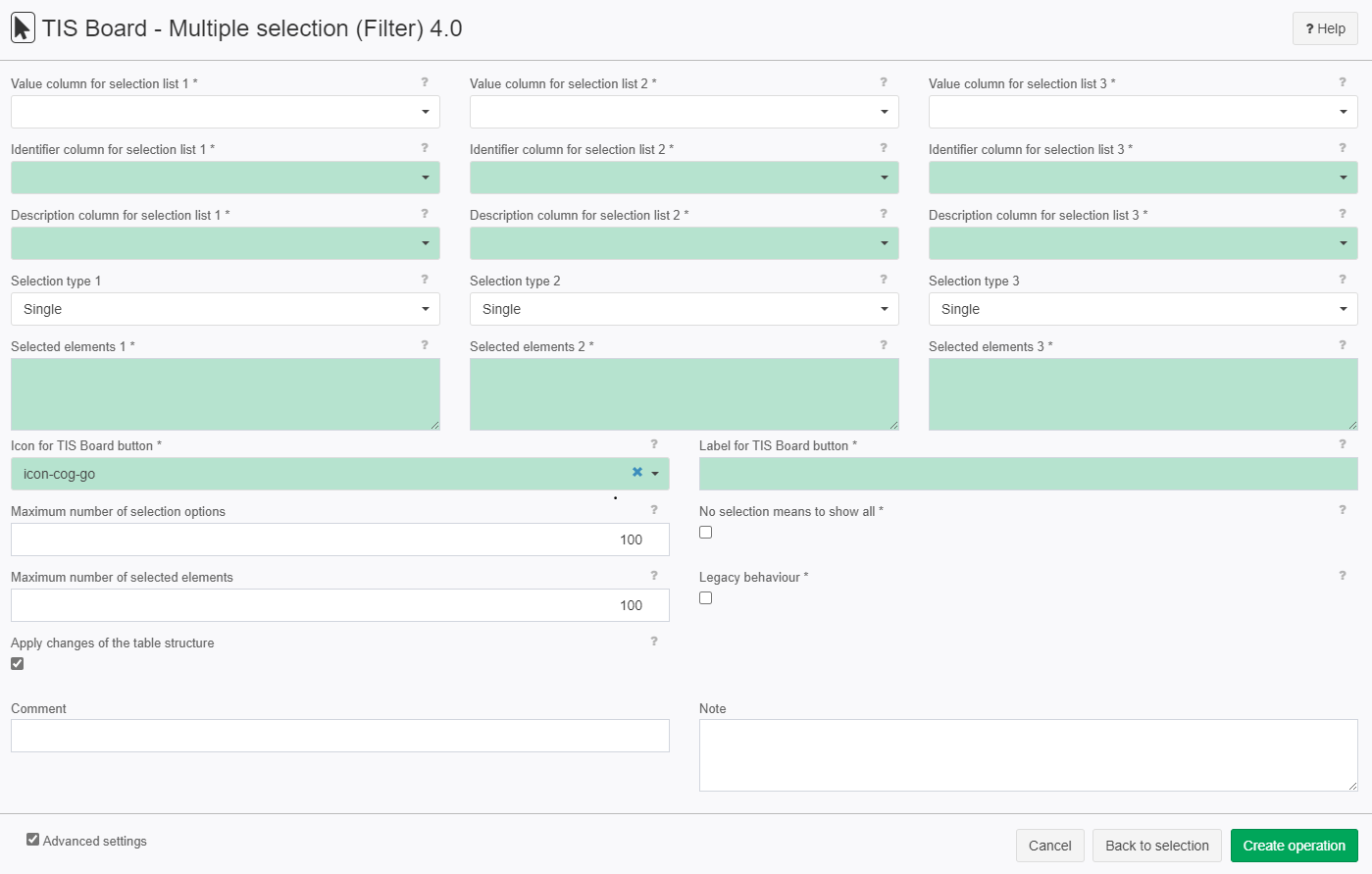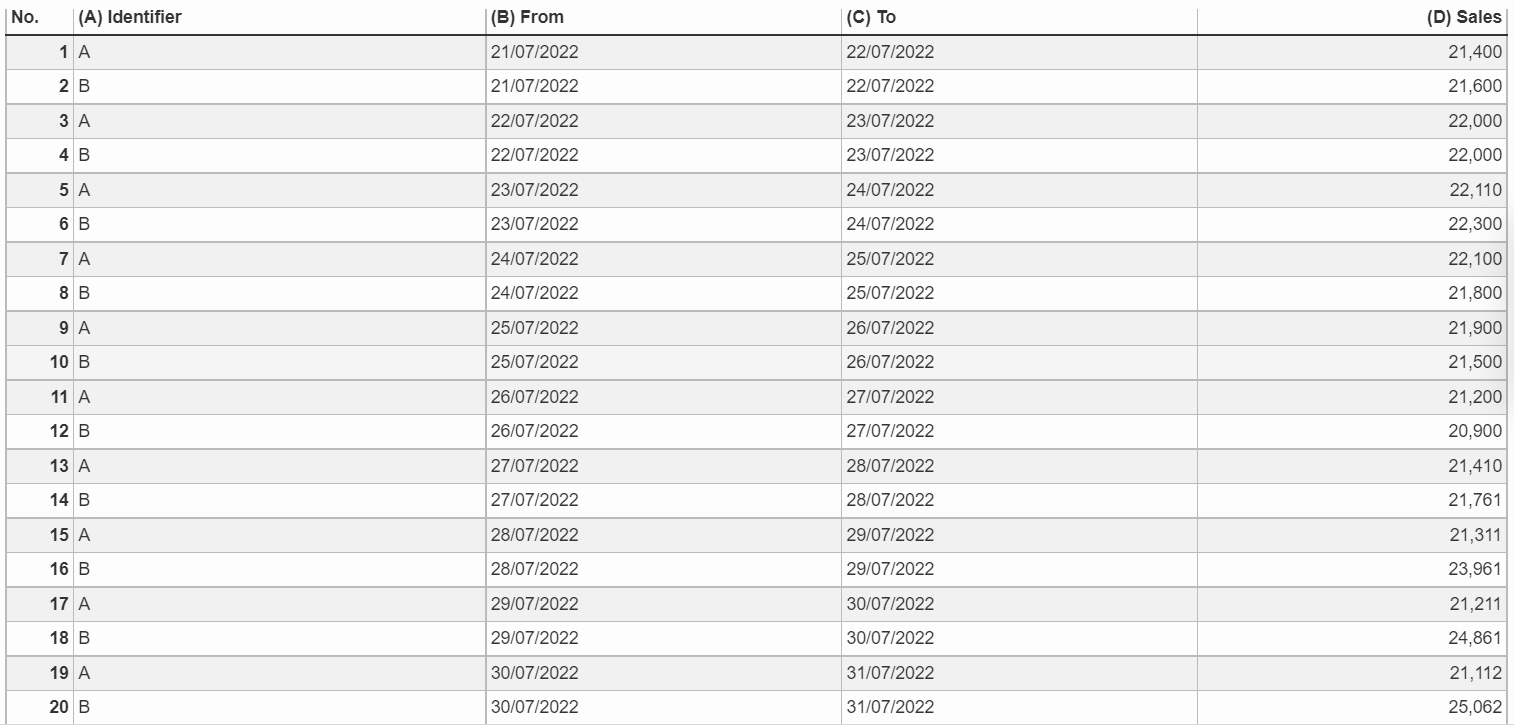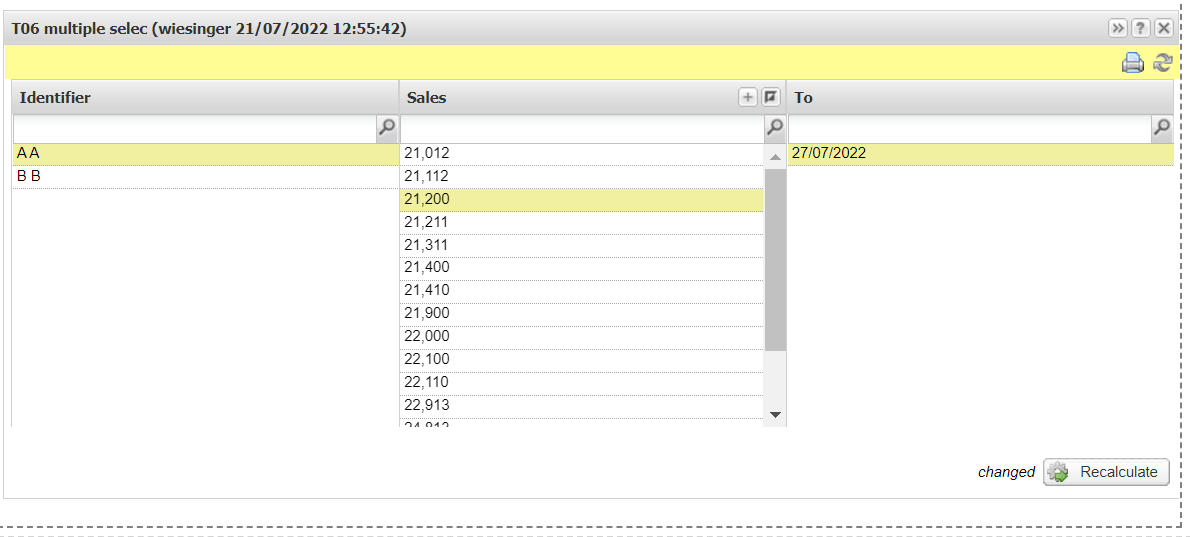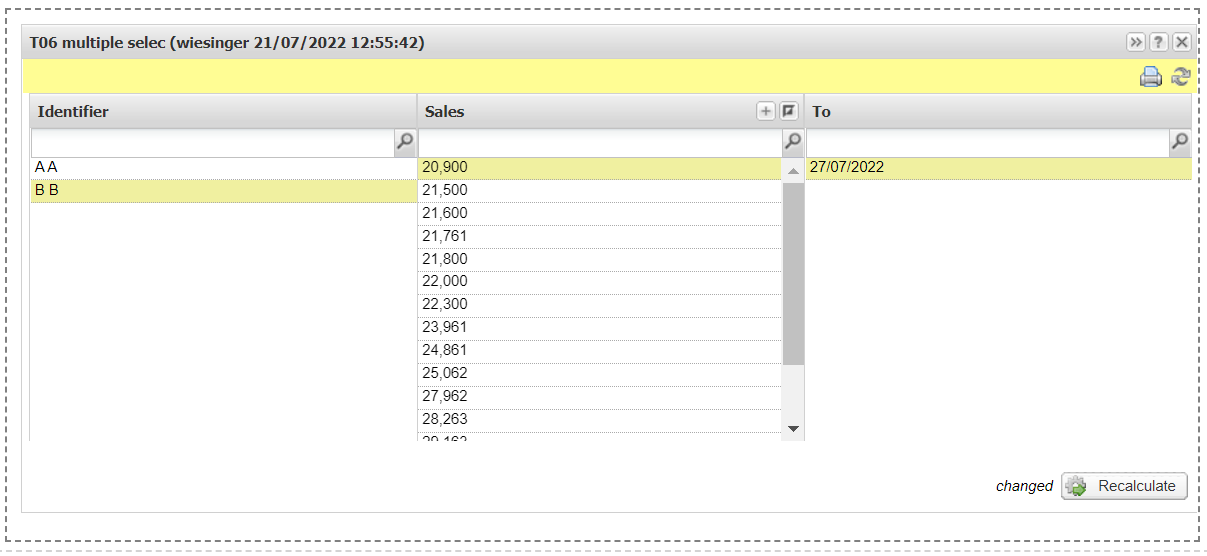TIS Board - Multiple selection 4.0
Summary
This operator allows to filter rows of a data node's result table according to one or more fields of up to three columns.
This operator is a TIS Board operators for the Controller Portlet. The operator settings define the available filter criteria as columns of the table. These filter criteria are passed to the portlet by the operation. In the portlet, a TIS Board user can then make a selection. The selected filter criteria are then passed as parameter values back to the operation. The operation updates the data node's table accordingly.
Configuration
Input settings of existing table
Note:
- All columns defined in "Selection" and "Key" must be of type "Text".
- If a "Key" column is defined, then the "Key" column provides the filter criteria instead of the "Selection" column and the data from the "Selection" column only is additional information. This means, if a row with value X in column "Selection" and value K in column "Key" is selected, then exactly this row passes through the filter. If no "Key" column is defined, then all rows with value X in column "Selection" pass.
Name | Value | Opt. | Description | Example |
|---|---|---|---|---|
Value column for selection list 1 | System.Object | opt. | Column containing first selection criteria (e.g. company name). | - |
Identifier column for selection list 1 | System.Object | opt. | Column containing the unique keys of entries in Selection 1 (e.g. company ID). | - |
Description column for selection list 1 | System.Object | opt. | Column containing additional information on entries in Selection 1 (e.g. detailed description of the company). | - |
Value column for selection list 2 | System.Object | opt. | Column containing second selection criteria (e.g. department) | - |
Identifier column for selection list 2 | System.Object | opt. | Column containing the unique keys of entries in Selection 2 (e.g. department ID). | - |
Description column for selection list 2 | System.Object | opt. | Column containing additional information on entries in Selection 2 (e.g. detailed description of the department) | - |
Value column for selection list 3 | System.Object | opt. | Column containing third selection criteria (e.g. employee's last name) | - |
Identifier column for selection list 3 | System.Object | opt. | Column containing the unique keys of entries in Selection 3 (e.g. national insurance number). | - |
Description column for selection list 3 | System.Object | opt. | Column containing additional information on entries in Selection 3 (e.g. first name and last name) | - |
Settings
Name | Value | Opt. | Description | Example |
|---|---|---|---|---|
Selection type 1 | System.String
| - | Selection type for Selection 1 | - |
Selection type 2 | System.String
| - | Selection type for Selection 2 | - |
Selection type 3 | System.String
| - | Selection type for Selection 3 | - |
Label for TIS Board button | System.String | opt. | Label for TIS Board button | - |
Icon for TIS Board button | System.Int32
| - | Icon for TIS Board button | - |
Selected elements 1 | System.String | opt. | Comma separated criteria selected from Selection 1 if no column is defined for Key 1. Criteria selected from Key 1 if a column is defined for Key 1. Criteria separated by comma. This parameter is usually set by the Controller Portlet. | - |
Selected elements 2 | System.String | opt. | Criteria selected from Selection 2 if no column is defined for Key 2. Criteria selected from Key 2 if a column is defined for Key 2. Criteria separated by comma. This parameter is usually set by the Controller Portlet. | - |
Selected elements 3 | System.String | opt. | Criteria selected from Selection 3 if no column is defined for Key 3. Criteria selected from Key 3 if a column is defined for Key 3. Criteria separated by comma. This parameter is usually set by the Controller Portlet. | - |
No selection means: Show all | System.Boolean | opt. | If checked, then everything is shown when no selection is made. Otherwise, nothing is shown when no selection is made. | - |
Maximum number of selection options | System.Int32 | - | Maximum number of displayed rows per Selection or Key column | - |
Maximum number of selected elements | System.Int32 | - | Maximum number of selected elements per Selection or Key column.
| - |
Apply changes of data model | System.Boolean | - | If checked, portlets adopt changes of data model (e.g. changed column name or column type). | - |
Legacy behavior | System.String | opt. | - | - |
Want to learn more?
Screenshot

Examples
Example: Single and multiple selection
Situation | This example shows you how to use the single and multiple selection operator.
We want to filter according to data in the columns "Identifier" and "Sales" and "To". For "Identifier", we want to be able to select more than one value, for "Sales", we only want to allow to select one value. |
|---|---|
Settings |
This operation will now put the data in certain sections the first section will be the "Identifier" in it are the "Sales" of either A or B and in the "Sales" parts of the "To" column will be found. After we save the operation we need to open the "TIS Board". This can be done by clicking on the "TIS Board" checkbox.
Now a blue plus sign should pop up.
Please click on the plus sign to create a new portlet. After connecting to the "TIS Board" please select you project then your data source then "Controller" and click on apply.
|
Result | As you can see we can now select the values to reveal filtert new data.
|
Troubleshooting
Nothing known up to now.







